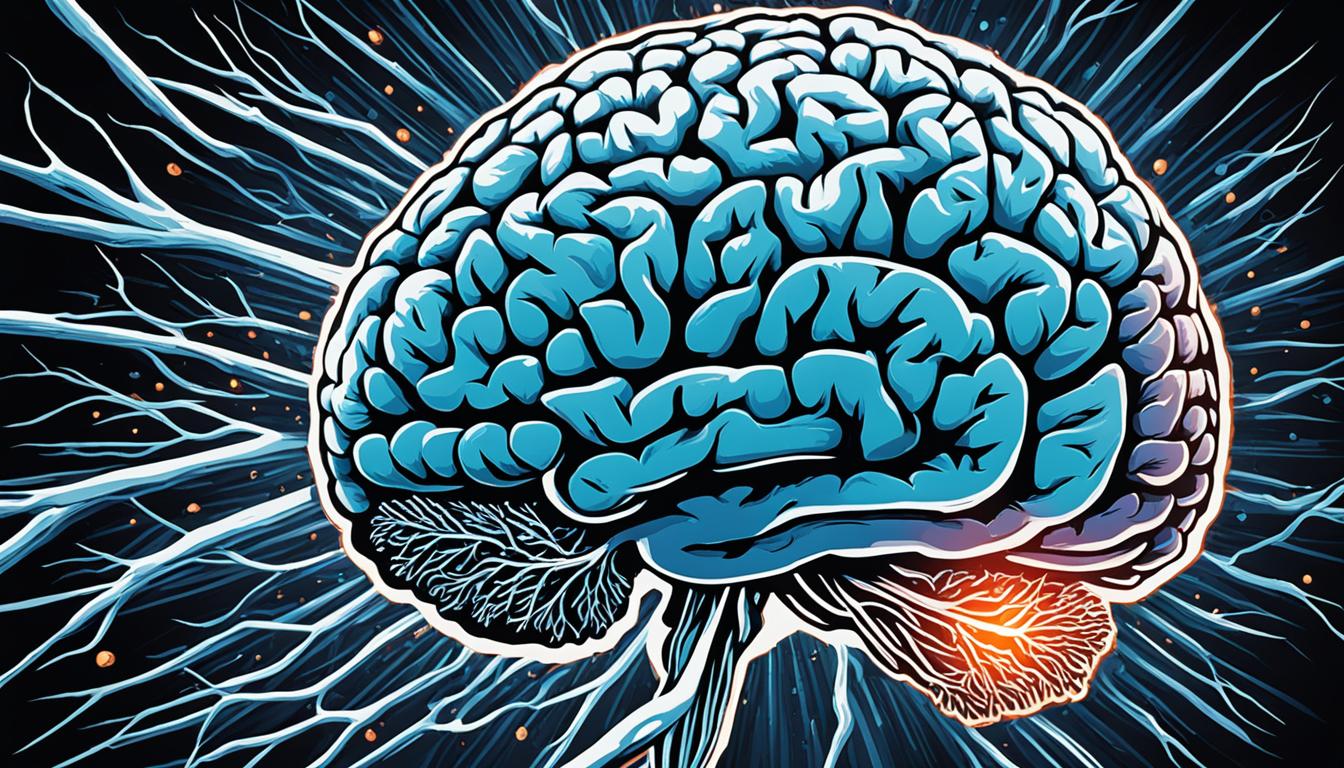Pineoblastoma is a rare and fast-growing cancer of the brain that mainly hits kids. It starts in the pineal gland. This gland helps regulate our sleep-wake cycles. The sickness quickly moves through fluid around the brain.
Common signs of pineoblastoma include ongoing headaches, feeling sick to your stomach, weird eye moves, and high pressure in your head. These signs might look like other, less serious illnesses. It’s key to watch for these symptoms in kids, so they get the right care early.
The reasons behind pineoblastoma are not totally clear. It seems to come from changes in genes. These changes make cells in the pineal gland grow out of control. Science is working to find more about this sickness and better treatments.
Doctors use exams and tests like MRIs to see the brain and spot a tumor. They may also take a tiny piece of the tumor to confirm it’s pineoblastoma. This diagnosis process is key for starting the right treatments.
After finding pineoblastoma, doctors might do surgery to take out the tumor. But because of the way it spreads, they can’t always remove it all. Then, patients often get radiation to kill any leftover cancer cells. Chemotherapy might also be given to battle the illness further if needed.
The outlook for someone with pineoblastoma depends on many things, like age and how far the tumor has spread. How well they respond to treatments is also critical. The chance of surviving for five years can be 10% to over 80%. This shows how crucial early and well-thought-out treatment plans are.
Key Takeaways:
- Pineoblastoma is a rare cancer that primarily targets children’s brains.
- Signs like headaches, nausea, weird eye moves, and high head pressure might show up.
- The cause of pineoblastoma is thought to be gene mutations.
- To confirm the sickness, doctors do tests and imaging, and sometimes a biopsy.
- Treatments can include surgery, radiation, and chemo.
- Survival rates can vary greatly, from 10% to over 80% at five years.
Symptoms and Diagnosis of Pineoblastoma
To diagnose pineoblastoma, doctors use clinical assessments and imaging tests. Pineoblastoma symptoms differ based on where and how big the tumor is. Common signs are nausea, vomiting, and changes in how your brain works.
- Headaches
- Abnormal eye movements
- Problems with balance and coordination
These signs might suggest other sicknesses, making thorough assessment vital. This evaluation includes a full body check and a test to see how your brain is doing.
For a pineoblastoma diagnosis, MRI and CT scans are key. They show clear brain pictures, helping spot the tumor. These scans also check if the tumor has moved to other brain spots.
Sometimes, doctors need a biopsy to be sure it’s pineoblastoma. This involves taking a small piece of the tumor for closer look. It confirms the type of tumor, leading to the best treatment plan.
Further checks like lumbar puncture and blood tests may also happen. They offer more details on the tumor and its impact.
Diagnostic Methods for Pineoblastoma
| Diagnostic Method | Description |
|---|---|
| Clinical Evaluation | Physical examination and neurological exam to assess brain function. |
| Imaging Studies (MRI and CT scans) | Provide detailed images of the brain to locate and determine the size of the tumor. |
| Biopsy | Obtaining a tissue sample for further examination to confirm the presence of pineoblastoma. |
| Lumbar Puncture | Collection of cerebrospinal fluid for analysis. |
| Blood Tests | Gathering additional information about the tumor and its effects on the body. |
Treatment and Prognosis of Pineoblastoma
Doctors treat pineoblastoma with surgery, radiation, and chemo. Sometimes, surgery removes the tumor or takes a tissue sample. But, it’s hard to fully remove the tumor because it’s often deep in the brain.
After surgery, radiation therapy helps stop the tumor from growing. It aims to kill any leftover cancer cells in the brain. If a patient can’t have radiation, like very young kids, chemotherapy might be used. This means using strong medicines to fight the cancer.
The outlook for pineoblastoma varies. Surviving for 5 years after diagnosis can range from 10% to 80% or more. Pineoblastoma grows back and can spread. To fight it, patients need close care from a dedicated medical team and patient support groups.

